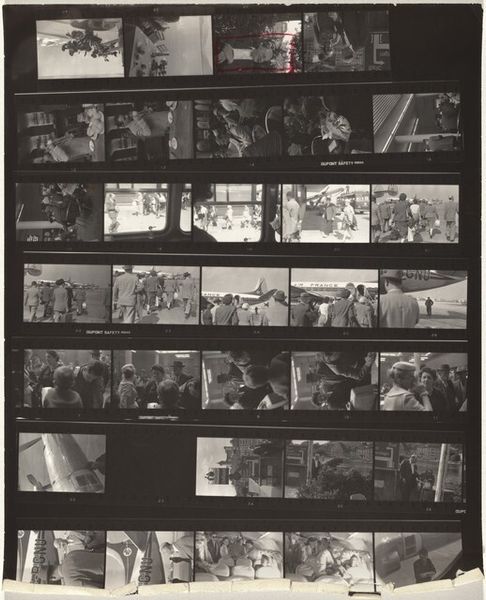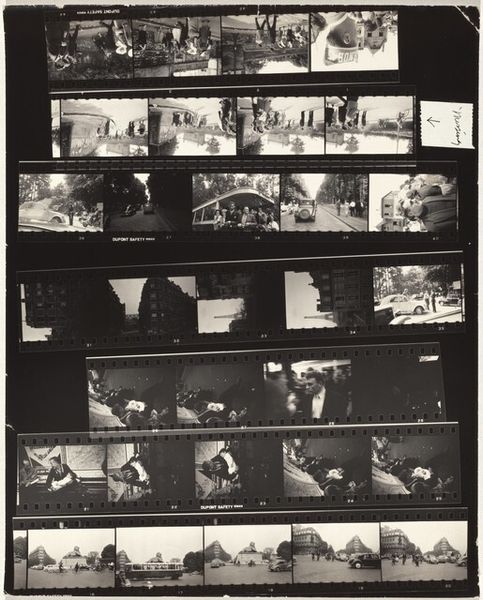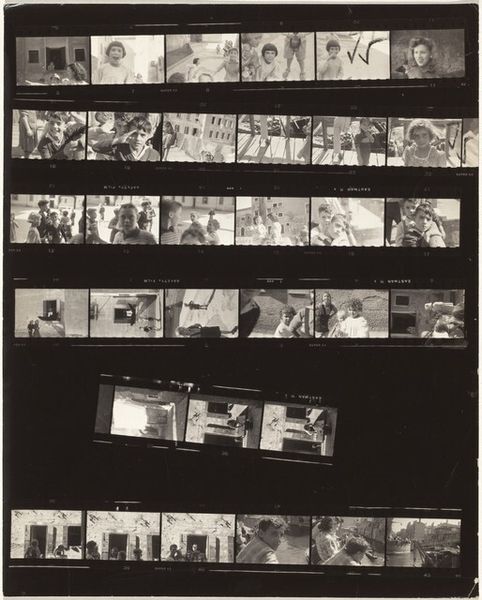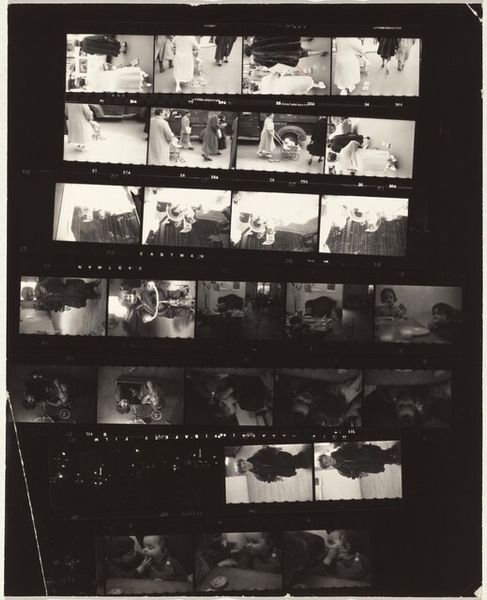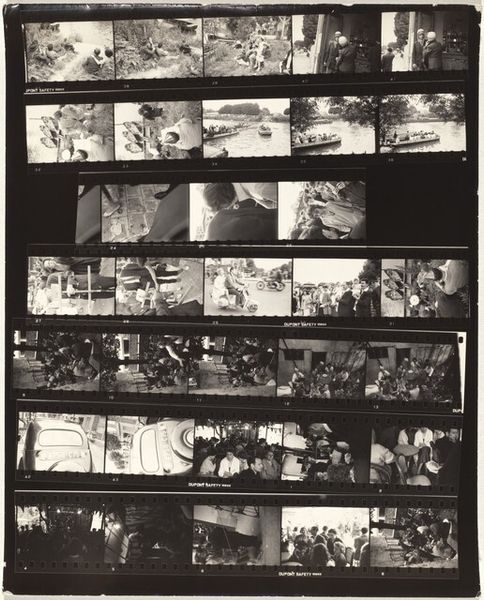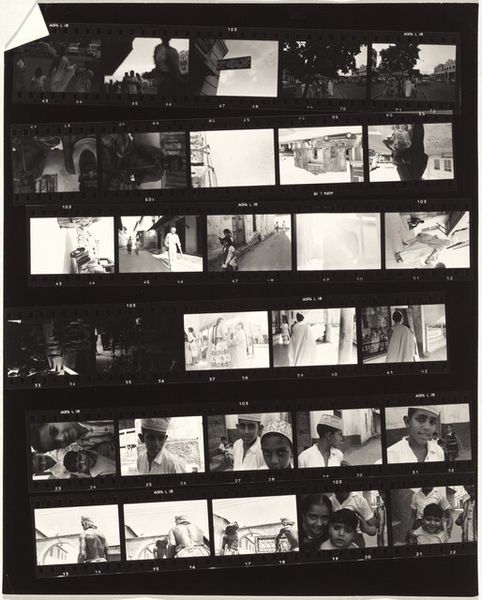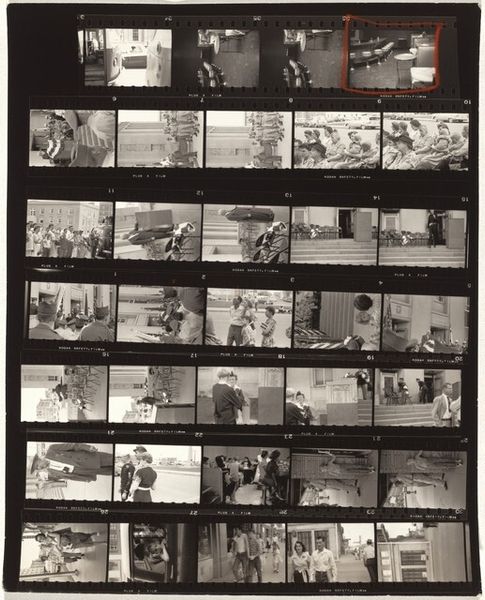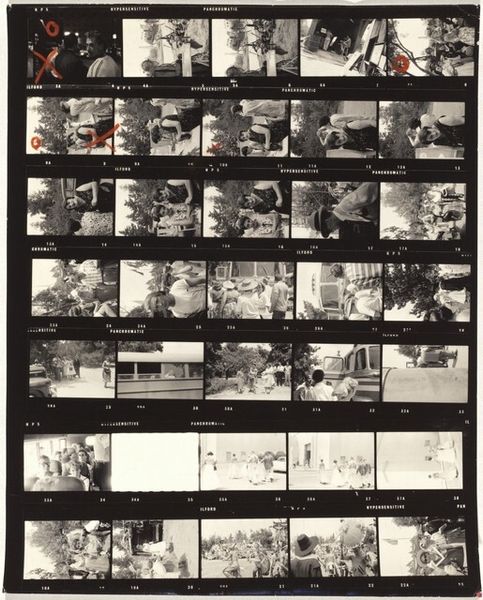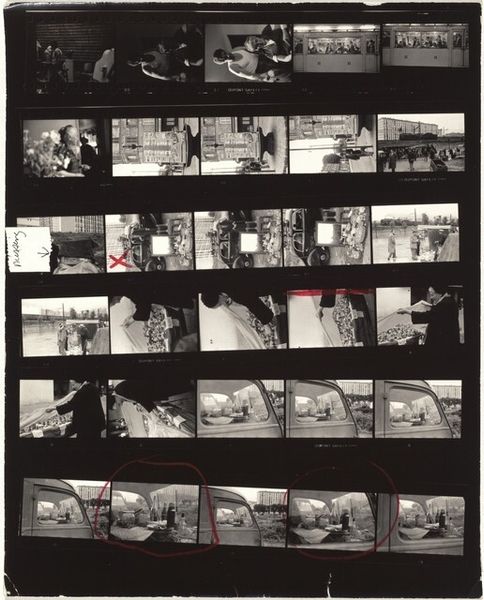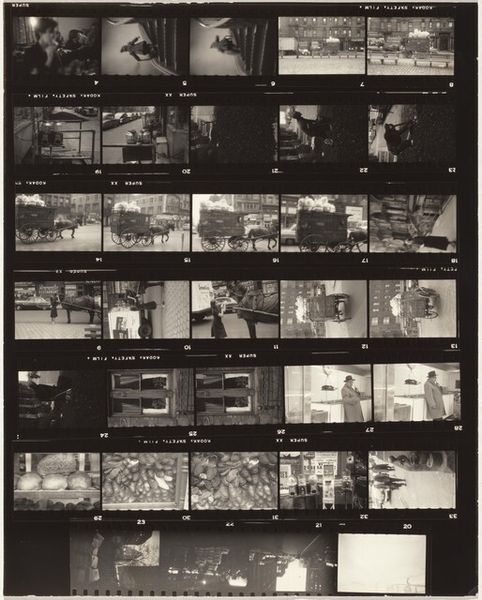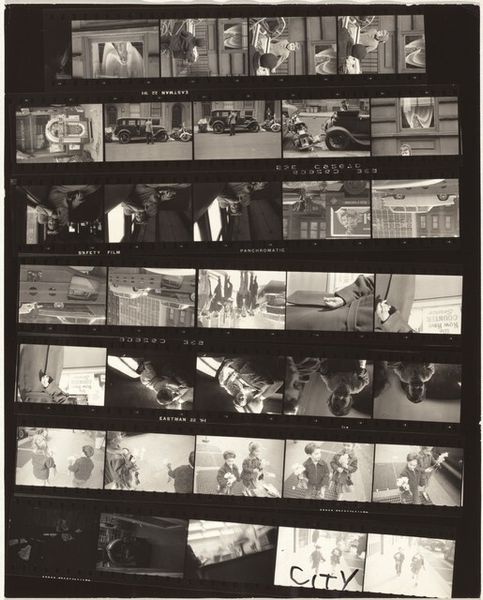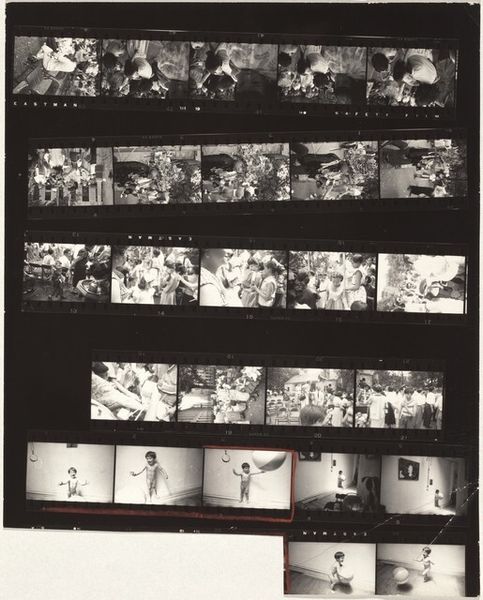
contact-print, photography
#
portrait
#
film photography
#
contact-print
#
archive photography
#
street-photography
#
photography
#
culture event photography
#
monochrome photography
#
modernism
#
realism
#
monochrome
Dimensions: overall: 25.3 x 20.4 cm (9 15/16 x 8 1/16 in.)
Copyright: National Gallery of Art: CC0 1.0
Editor: This is Robert Frank’s "Guggenheim 179--Miami, Florida," a contact print from 1955. Looking at the frames, there’s a sense of narrative fragments, like fleeting moments of mid-century American life. What strikes you when you look at this, or maybe how do you contextualize it? Curator: For me, this piece is a powerful commentary on American society during a period of immense change and inequality. Frank, a Swiss immigrant, captured a starkly different picture of the United States than the one being sold at the time. These aren't idealized scenes; instead, we see a fragmented and somewhat unsettling view of everyday life. Consider how race and class are subtly but powerfully present throughout this contact sheet. What details draw your attention in that regard? Editor: I notice the segregated scenes—wealthy patrons versus what seems to be workers on the street. It definitely wasn't the "American Dream" for everyone. Curator: Exactly. Frank’s lens challenged the dominant narrative. How might we interpret his choice of contact print – with the raw, unedited frames – as a conscious artistic decision related to this critique? Editor: Perhaps it's meant to feel incomplete, mirroring the broken promises of the time. Or that these raw glimpses give the unvarnished truth. So, it's not just a photo, it’s a political statement in itself. Curator: Precisely. By piecing together these seemingly disparate moments, Frank prompts us to question the realities behind the polished façade. Editor: It’s like he’s asking us to actively participate in constructing the narrative and challenging the status quo. Curator: Absolutely, and it remains a potent call to action even today. Editor: This has given me so much to consider, it’s really shifted my understanding of the photograph beyond its simple aesthetic.
Comments
No comments
Be the first to comment and join the conversation on the ultimate creative platform.
